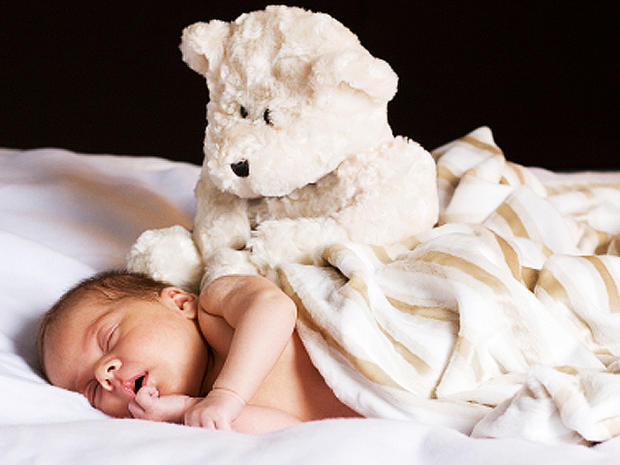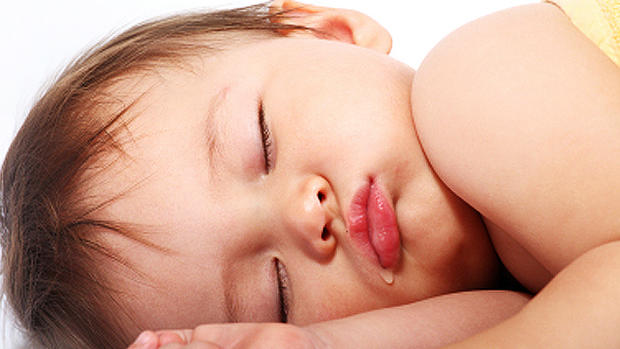Study: Sudden Infant Death Syndrome rates down, but more risk factors emerge
(CBS News) Sudden Infant Death Syndrome (SIDS) kills about 2,500 infants younger than 1 each year, and is a leading cause of death among that age group.
PICTURES: SIDS: 14 ways parents raise their risk
In 1994, the Back-to-Sleep campaign was launched to combat SIDS rates by telling parents that newborn infants should sleep on their back or side instead of their stomachs, citing scientific evidence. In the years that followed, the U.S. rate declined more than 50 percent but has since plateaued. A new study adds points to other emerging risk factors for SIDS, including "bed-sharing," - smoking, and having other objects in the crib.
"It's not that there are new risk factors; it's that now not all babies are sleeping on their tummies, so other things can be uncovered," study co-author Felicia Trachtenberg, a senior research scientist at New England Research Institutes, in Watertown, Mass, told HealthDay.
Bed-sharing is when infants share a bed with parents or another family member, often common when a child is nursing. Other risk factors tied to SIDS include being male, being exposed to alcohol or cigarettes in the womb or smoking after birth, or overheating caused by thick pajamas or blankets.
For the new study, published in the March 26 issue of Pediatrics, researchers wanted to examine whether the predominant risk factors involved in SIDS deaths have changed since the 1994 campaign kicked off. The researchers looked at SIDS deaths that occurred in San Diego between 1991 and 2008. During that time period, the researchers found the percentage of infants who died of SIDS after being placed to sleep on their stomachs decreased from 85.4 percent to 30.1 percent.
However, the percentage of SIDS infants bed-sharing at the time of death increased from 19.2 percent to 37.9 percent over the 17-year span, especially among infants younger than 2 months, and the percentage found in an adult bed increased from 23.4 percent to 45.4 percent.
Ninety-nine percent of SIDS infants had at least one intrinsic risk factor - such as being a boy or exposure to cigarettes while in the womb - or one extrinsic risk factor, such as sleeping on their stomach (prone sleeping) or with soft bedding. Seventy-five percent had at least one of each type of risk factor, while the majority (57 percent) had at least two extrinsic and one intrinsic risk factor.
"Most babies had two or more risk factors," study author Dr. Henry Krous, director of the San Diego SIDS Research Project at Rady Children's Hospital in Calif., told TIME Healthland. "What that says to us is that Back to Sleep should emphasize multiple risk factors. We still have a lot of work to do."
The researchers also found prone sleep remains the most significant risk factor contributing to SIDS, but sleeping on adult mattresses and bed-sharing have emerged as prominent risks.
What should nursing moms do?
Krous told WebMD, "The impetus for bed sharing is usually to make nighttime nursing easier, but there are cribs available that are placed right next to the bed to allow proximity without the risk."
WebMD has more on SIDS.

